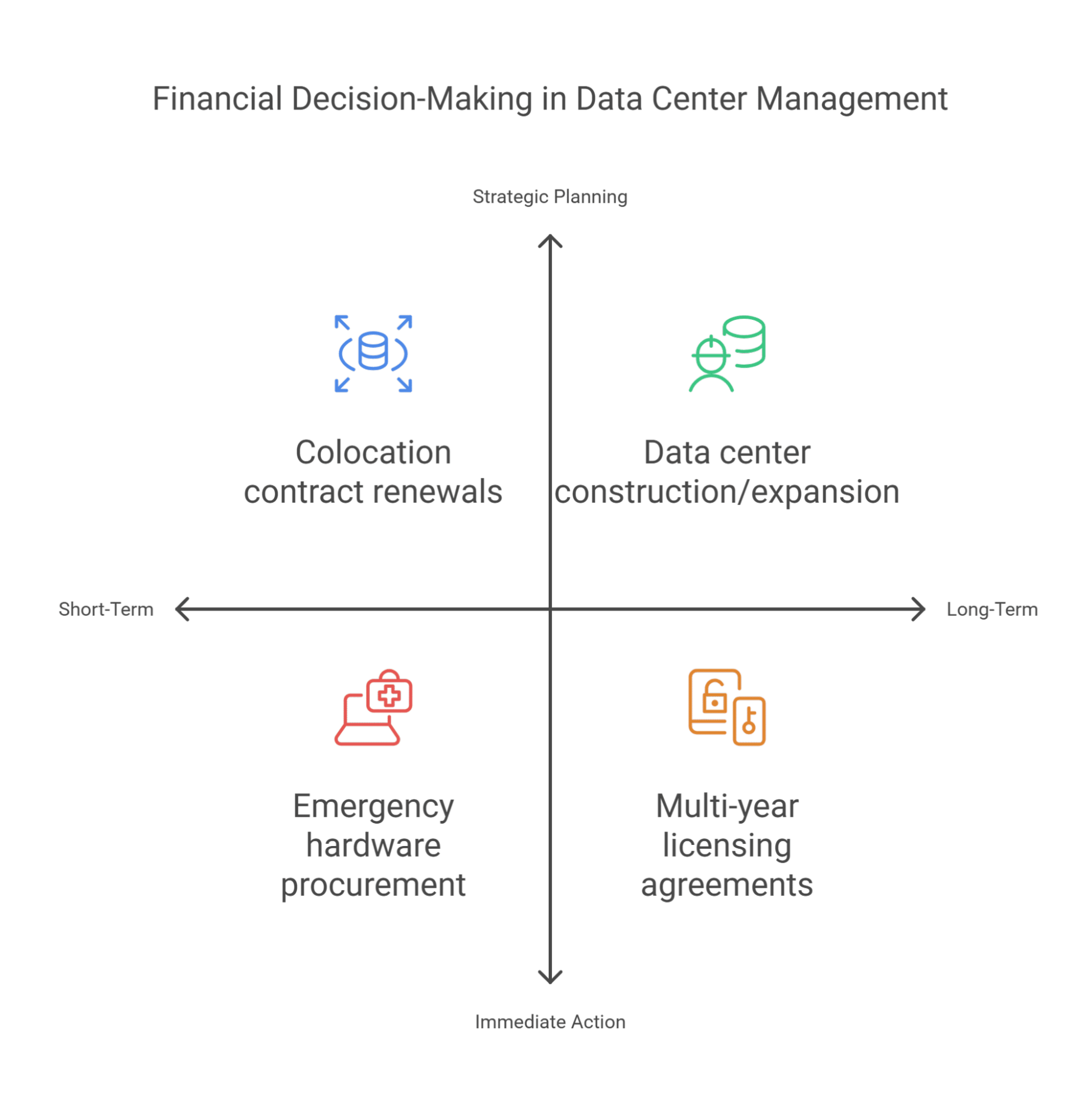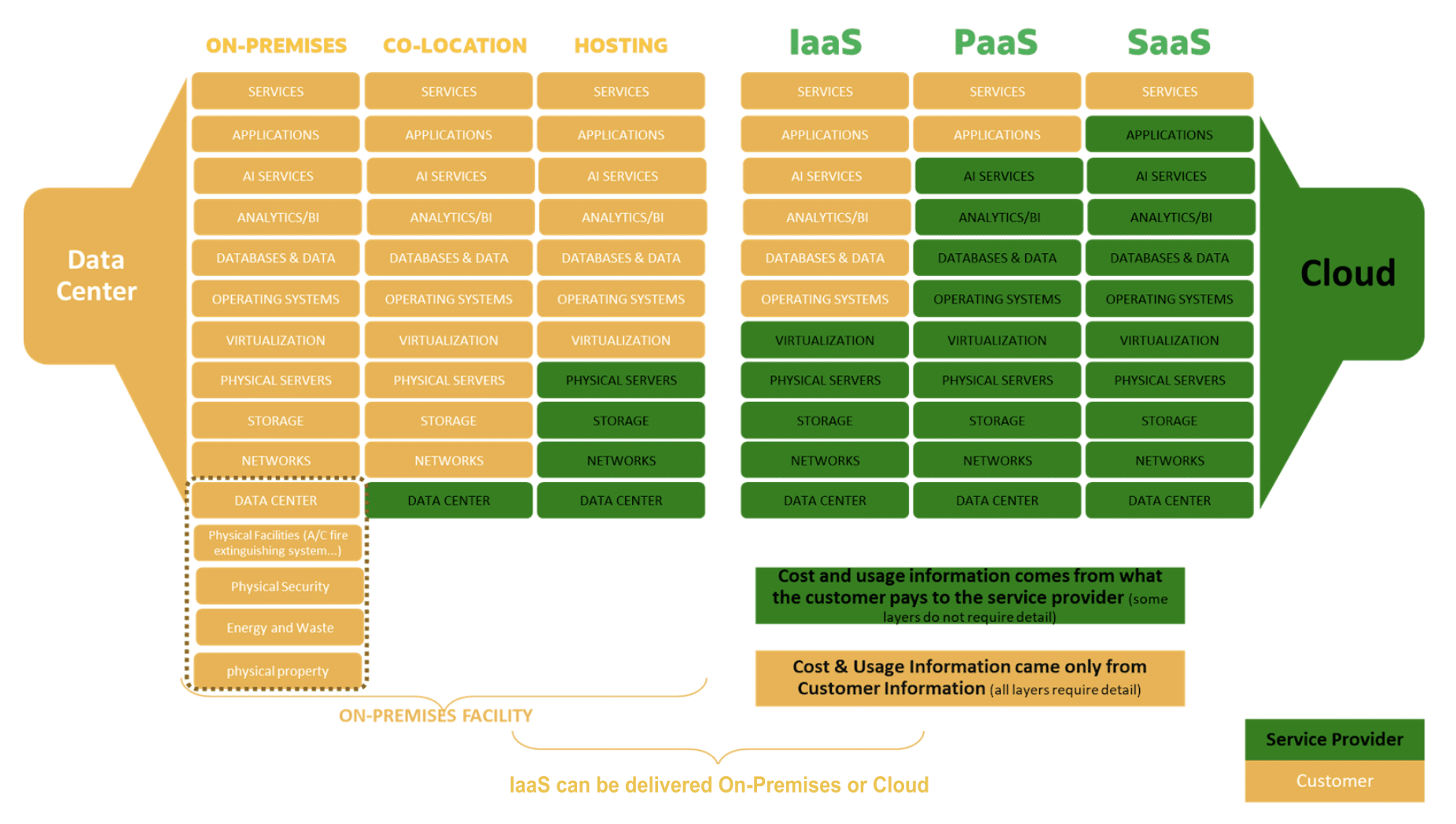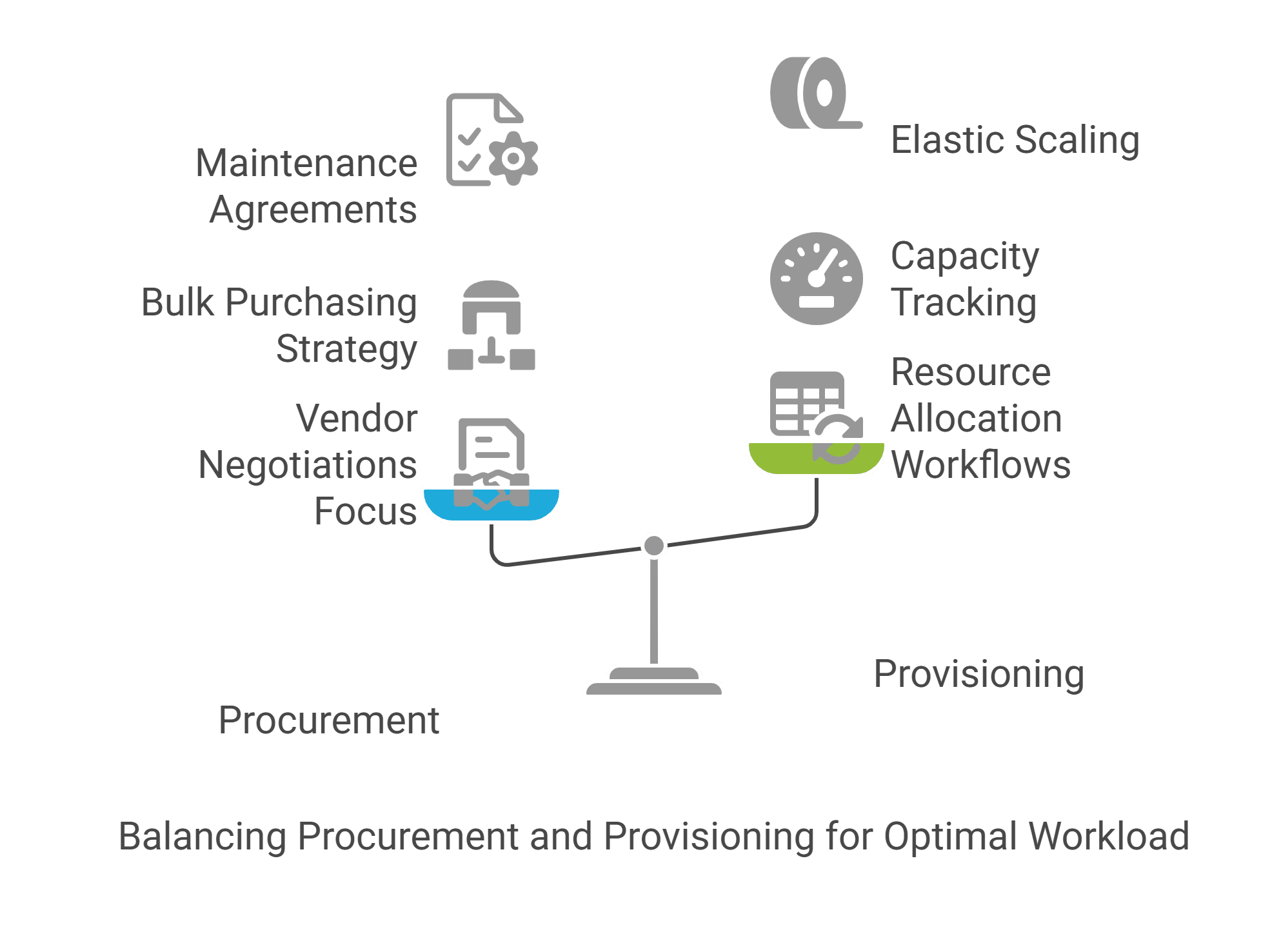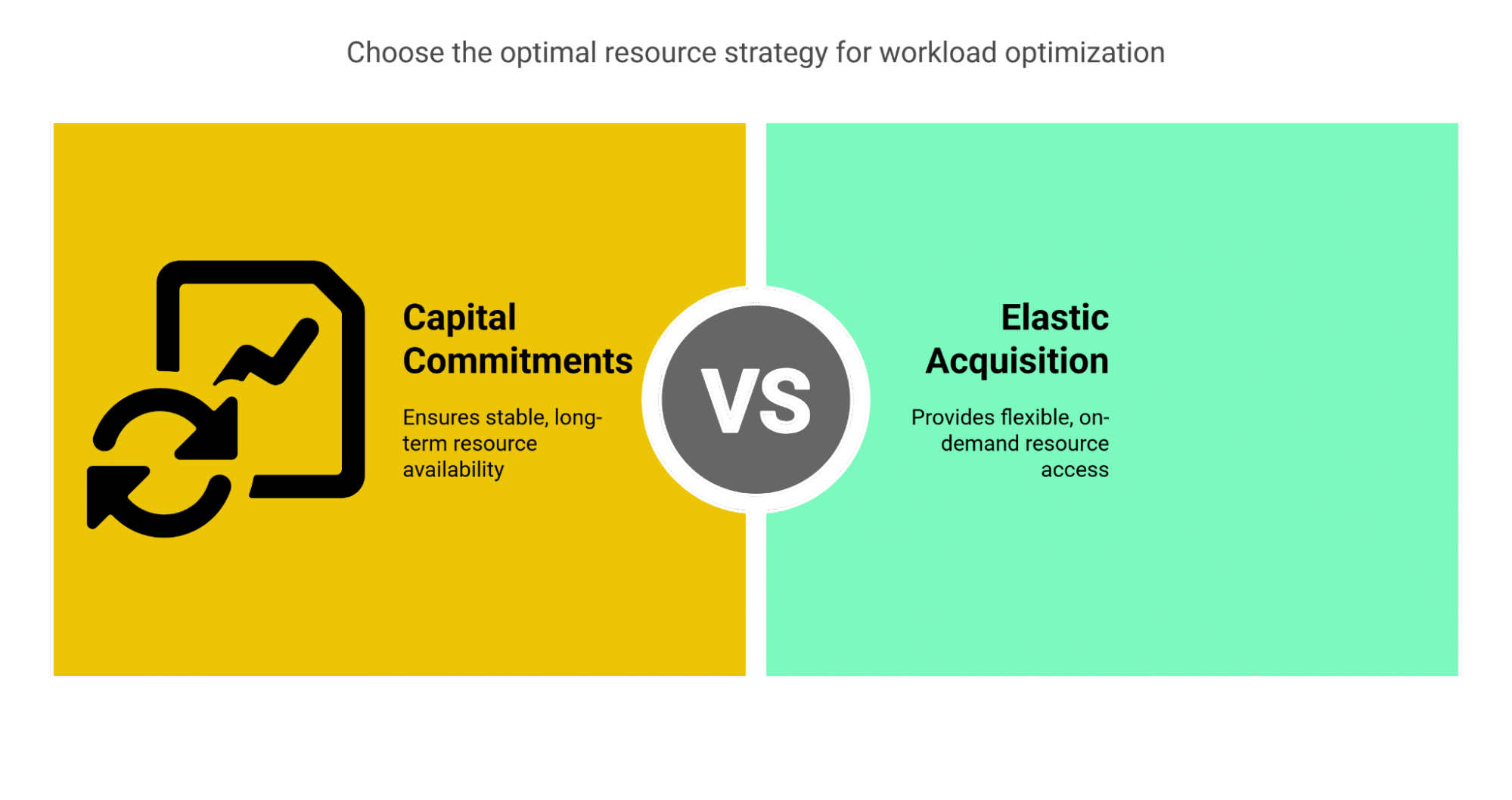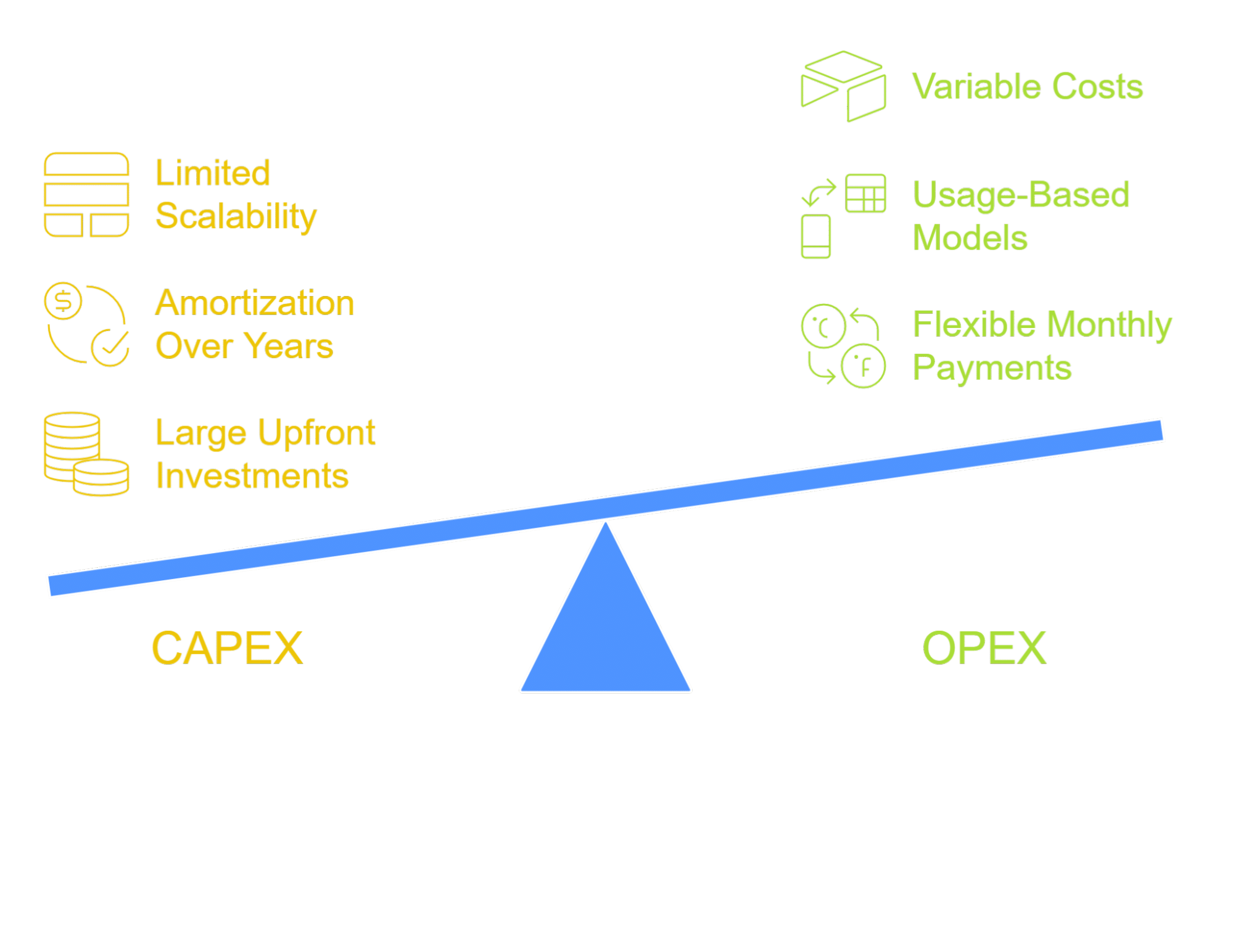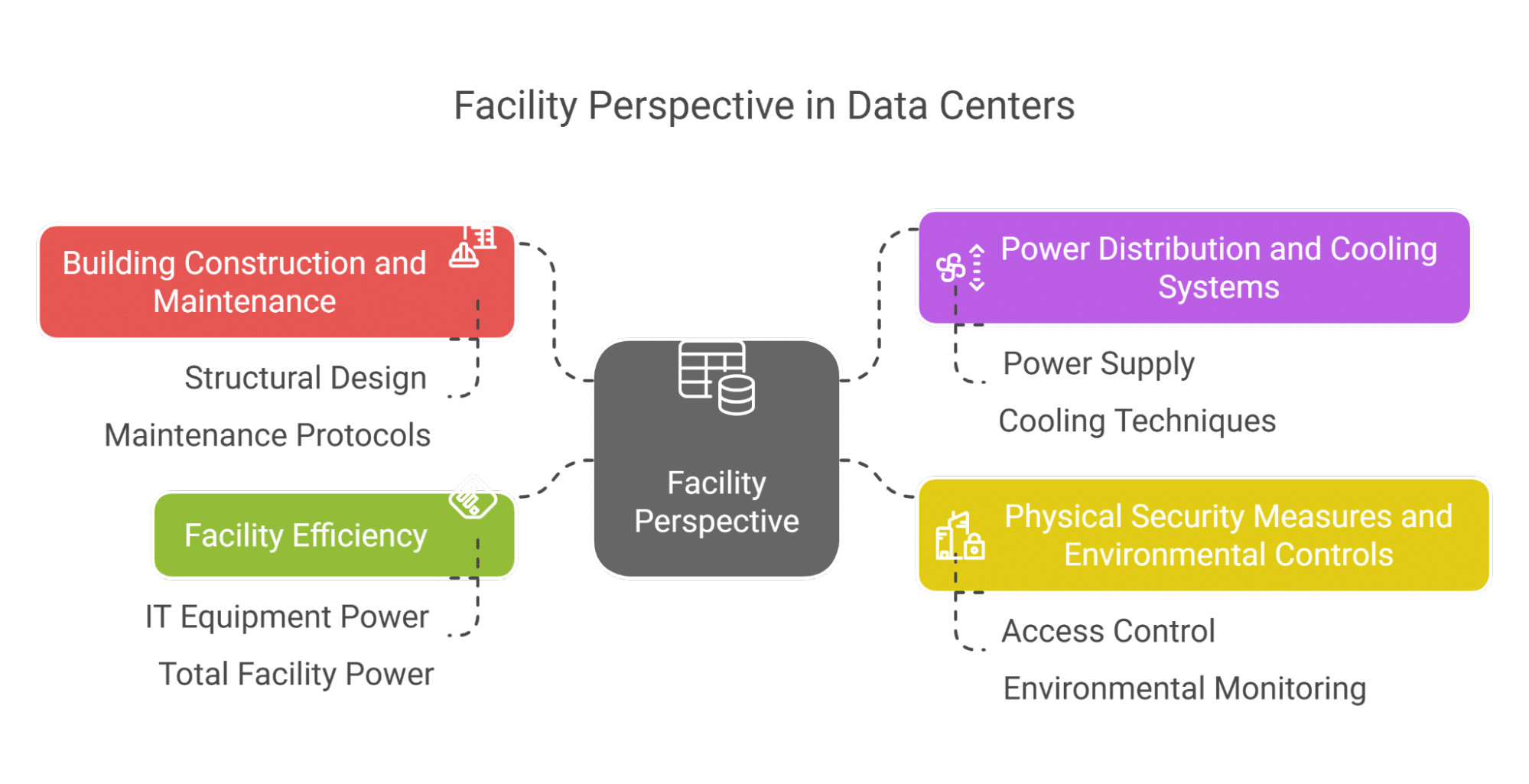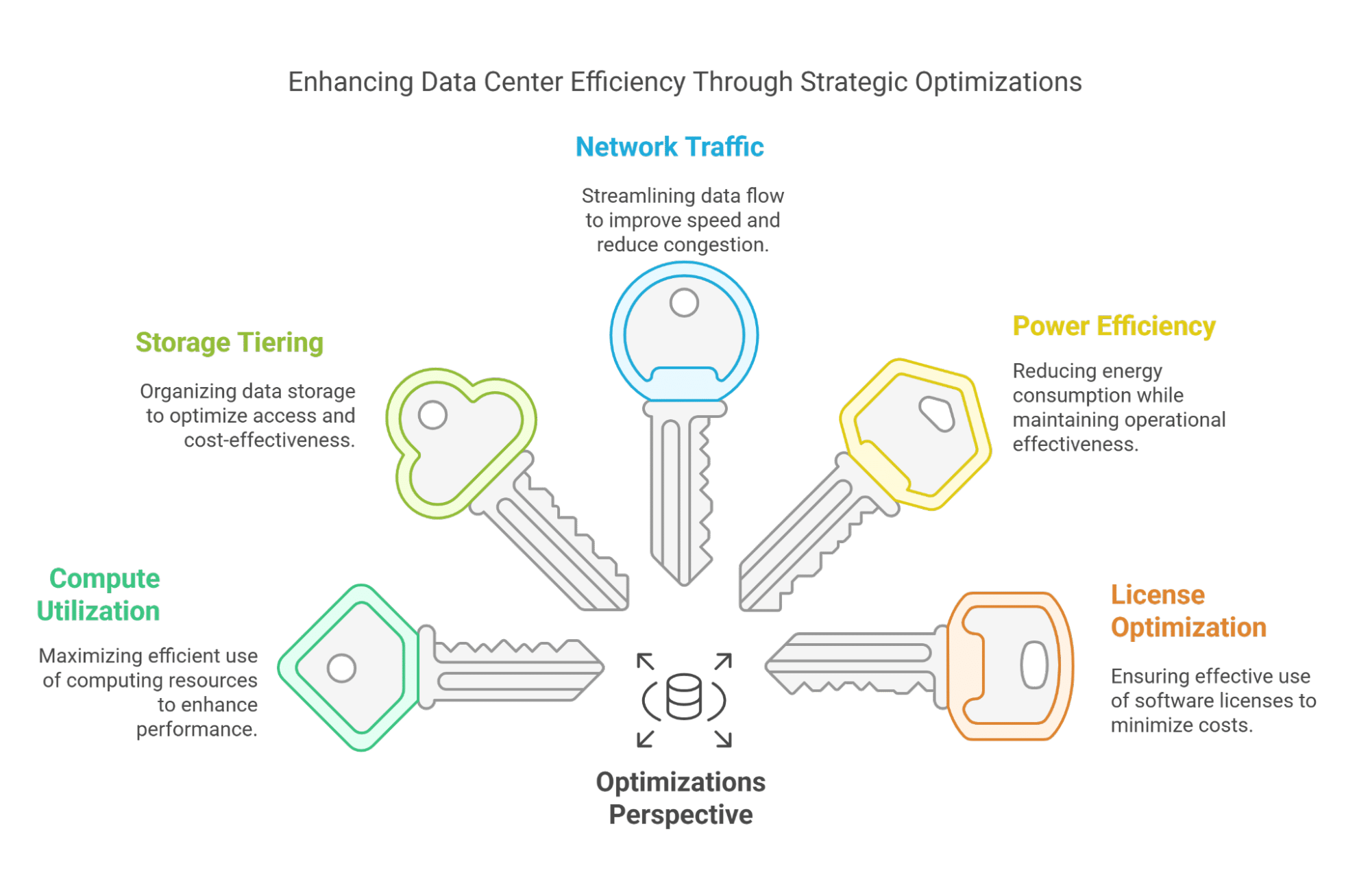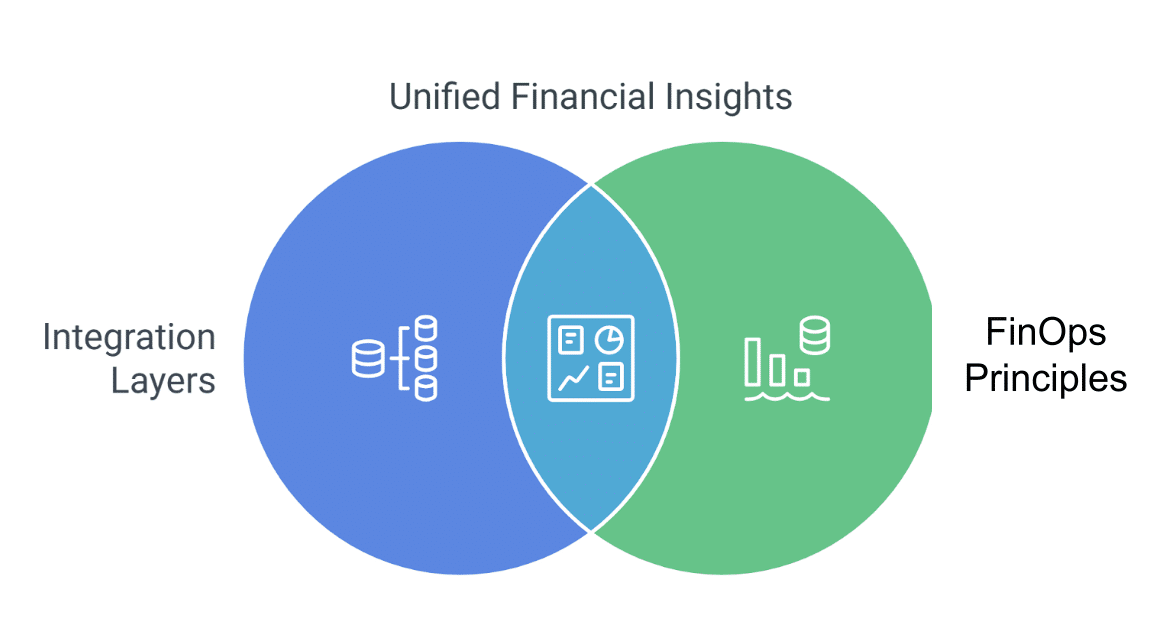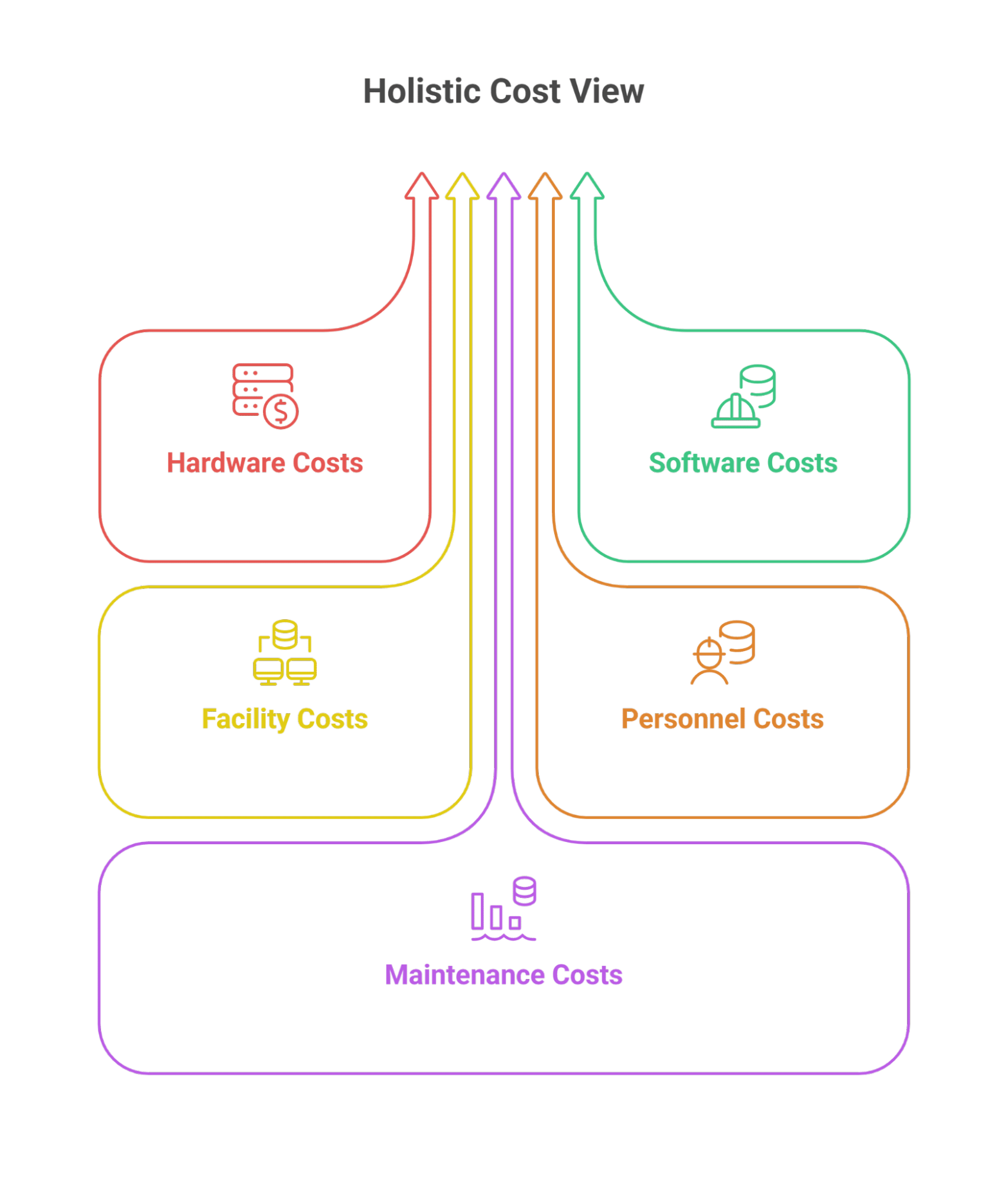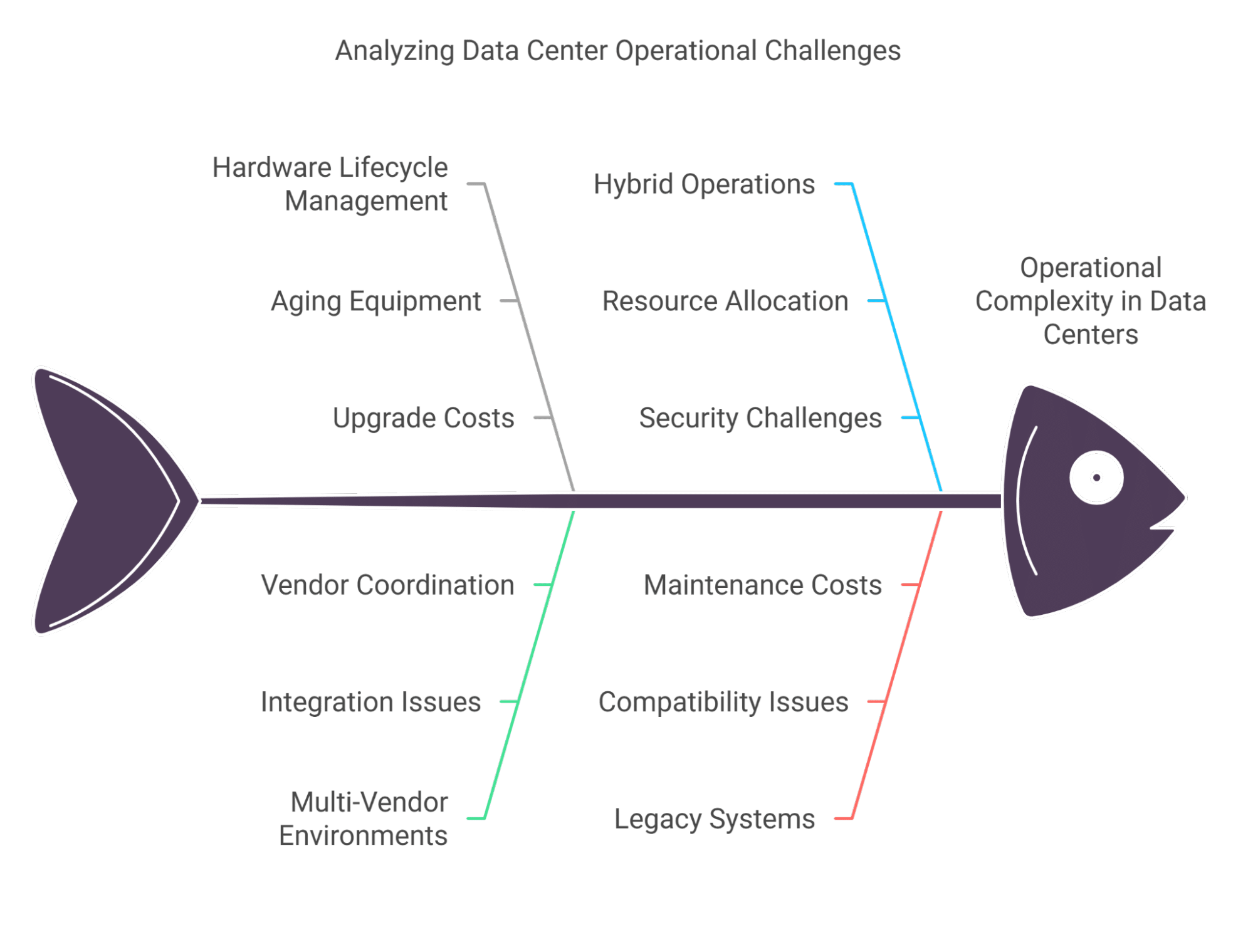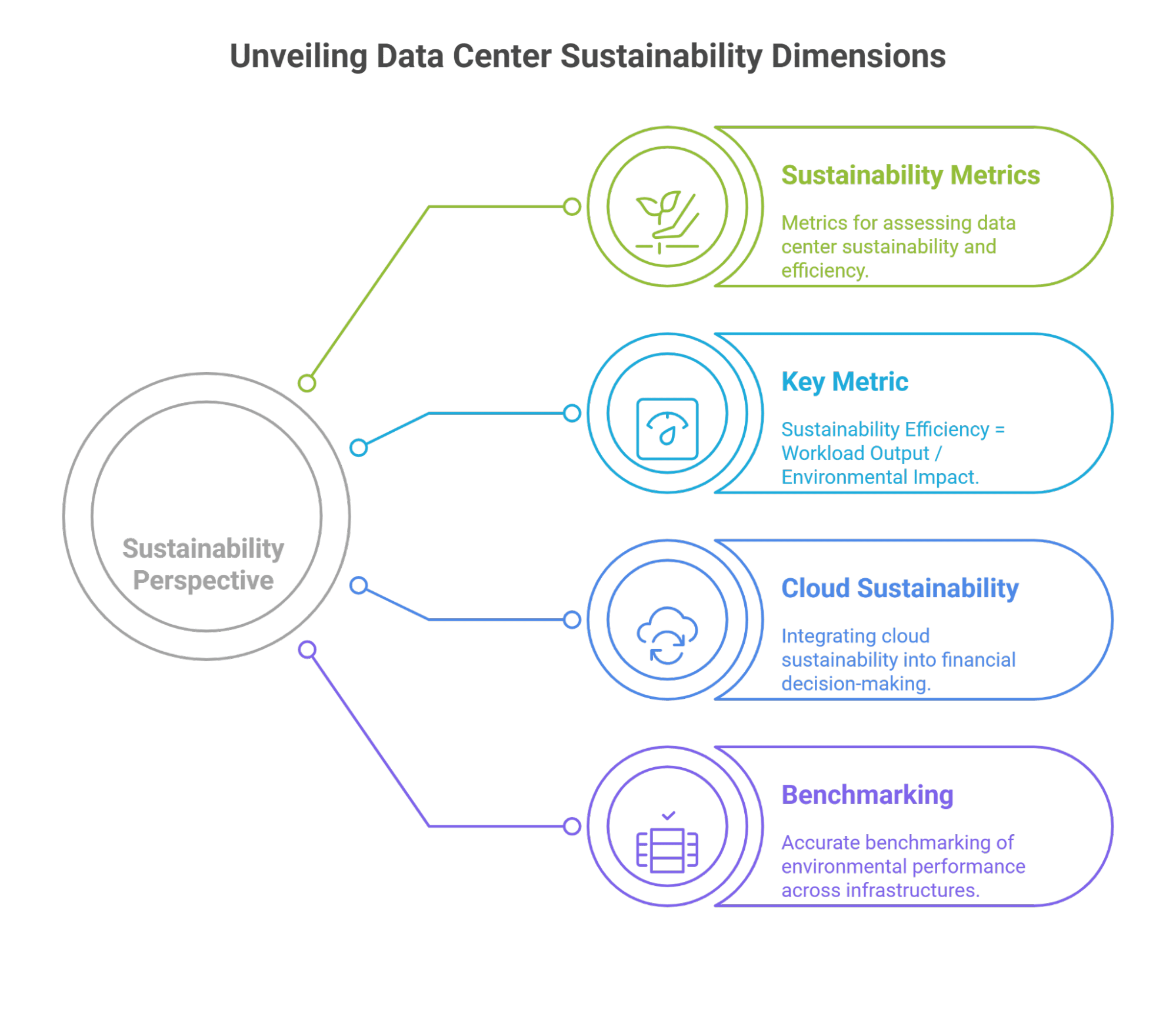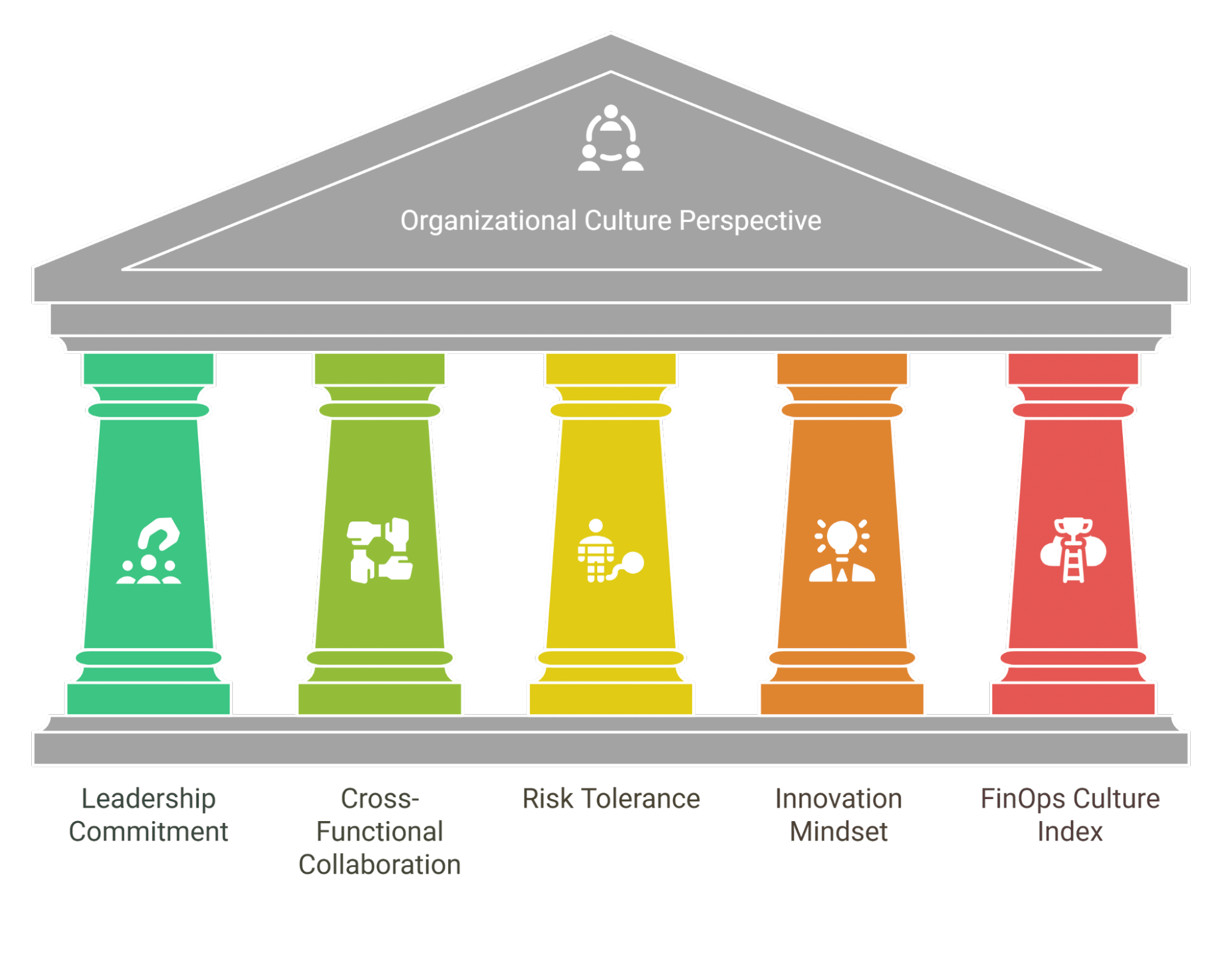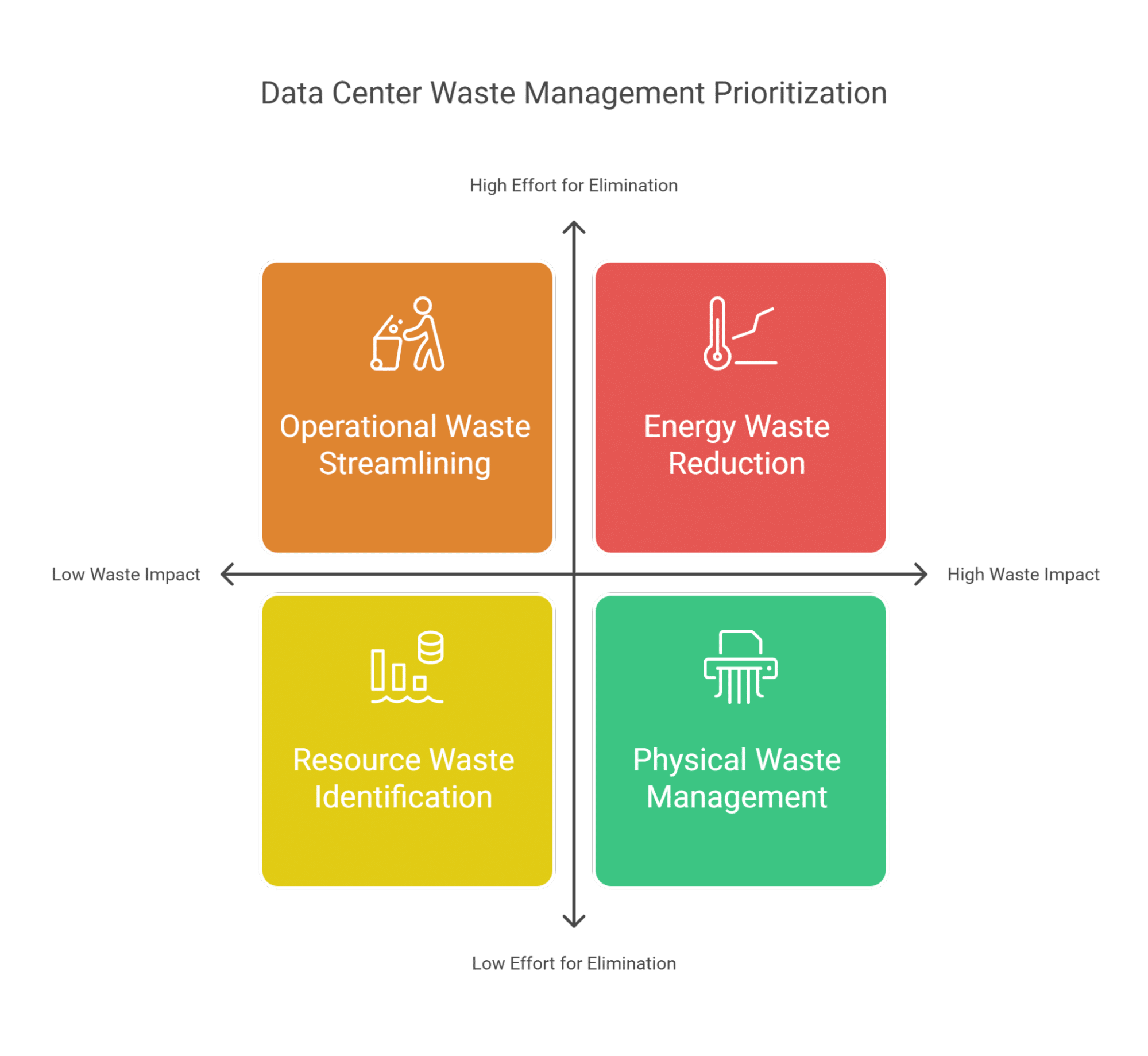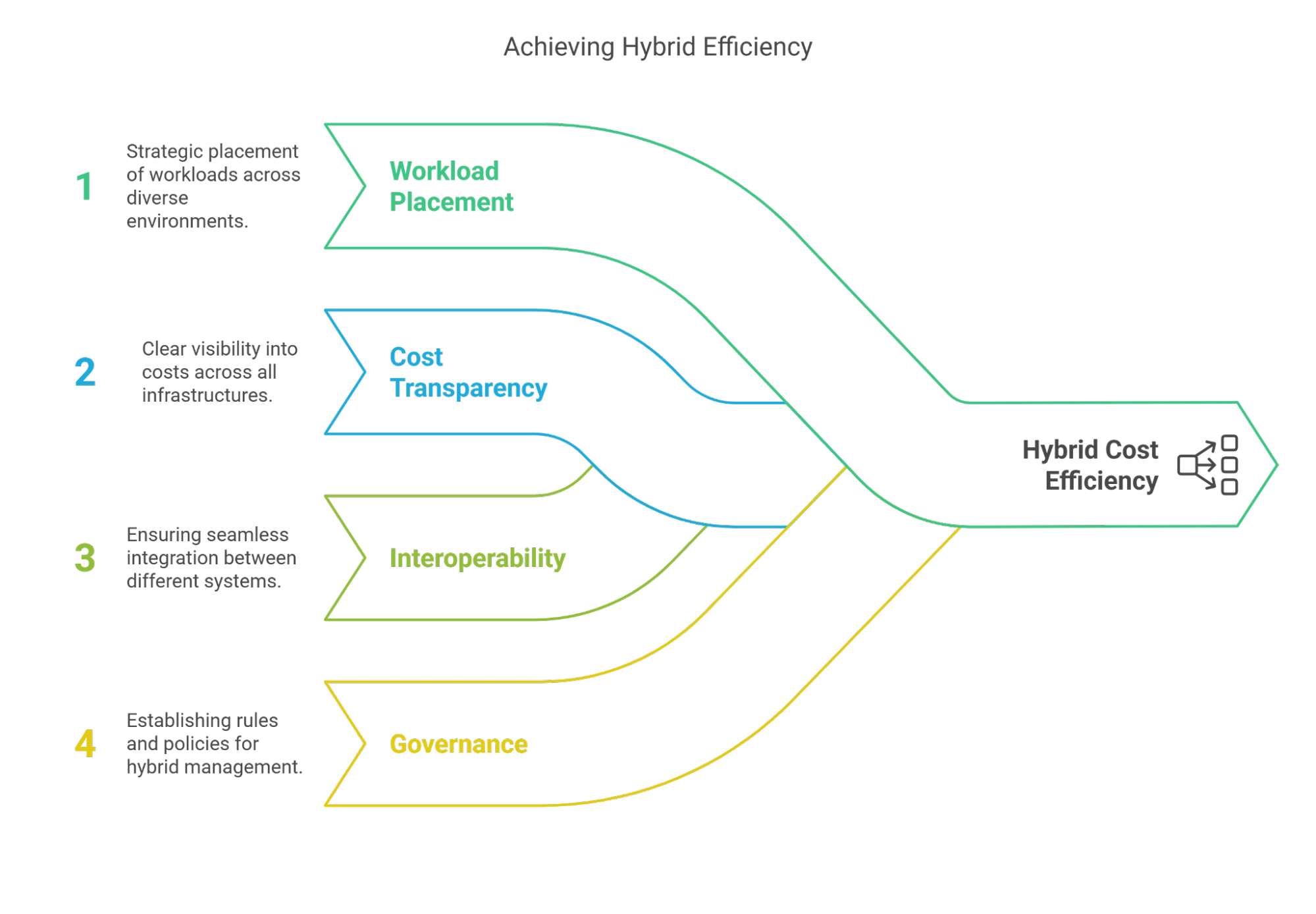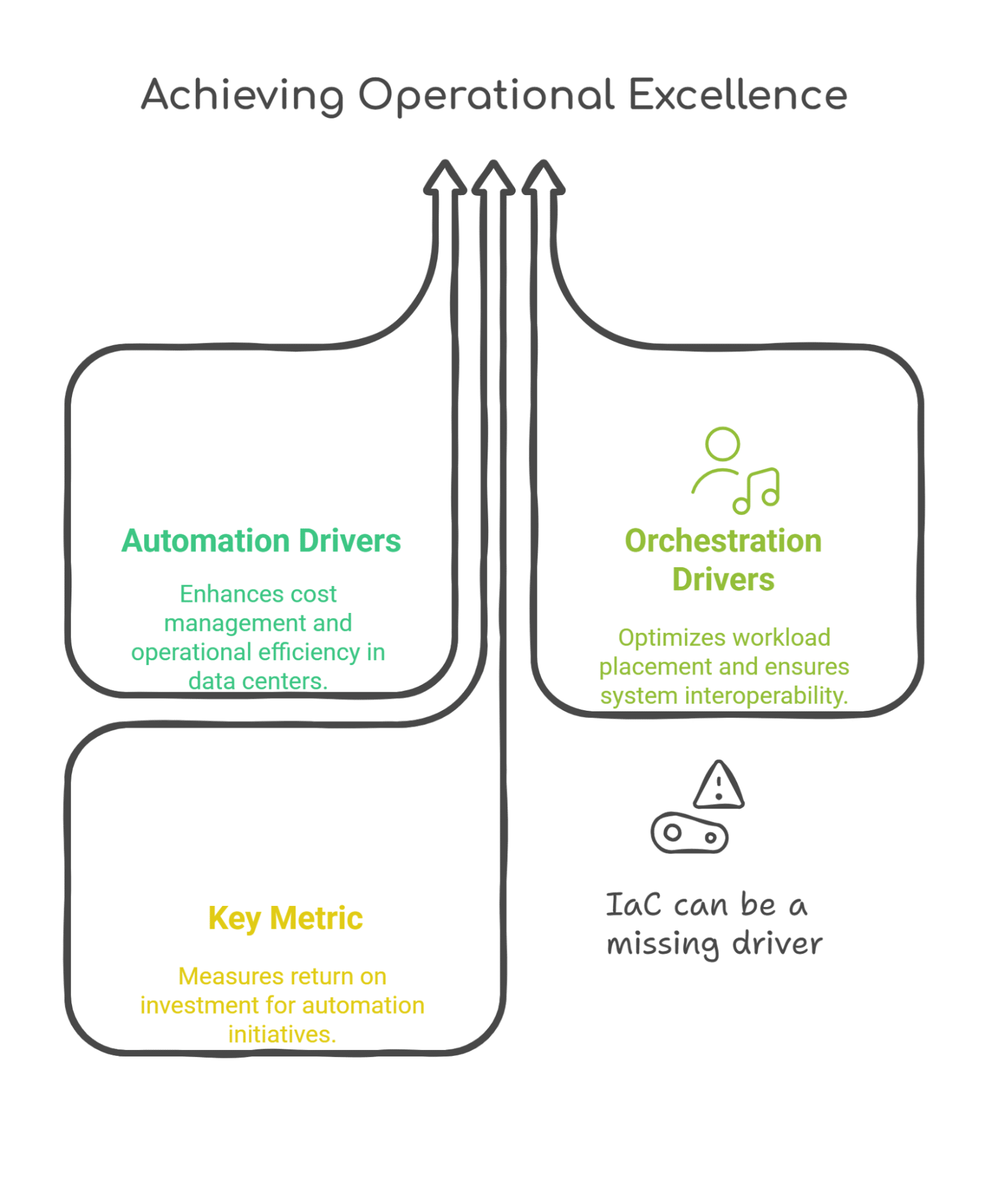Context for Building a FinOps Scope for Data Centers
This Paper is Part 1 of a FinOps for Data Center series outlining how applying FinOps Principles—focused on operational expenditure (OpEx), detailed cost attribution, and FinOps Framework Capability-driven practices—enables organizations to align Data Center investment with business value. By providing timely, accurate financial insights, FinOps empowers executive leadership to make more informed executive decisions.
The FinOps for Data Center Series
- Part 1: FinOps for Data Center – Context for Creating a FinOps Practice Profile (You are here)
- Part 2: FinOps for Data Center – Applying the FinOps Framework
- Part 3: FOCUS™ for Data Center – Structuring Data Center Cost and Usage Data
- Part 4: FinOps for Data Center – FinOps Tooling Considerations
Why FinOps for Data Center
The Data Center is evolving from a passive cost center to a key enabler of business performance. FinOps provides a framework that allows organizations to:
- Integrate financial oversight into strategic infrastructure planning.
- Unify financial and operational visibility across multiple platforms.
- Enable better decisions on multi-year planning, investments, risk, and scaling by executive stakeholders.
By adopting FinOps, organizations can shift from fragmented infrastructure reporting to a comprehensive, data-informed model that aligns cost transparency with strategic goals.
About This Paper
This document provides high-level, vendor-agnostic FinOps guidance for Data Centers, outlining the scope of FinOps practitioners’ roles, the application of the FinOps Framework, and relevant theoretical and practical considerations. While FOCUS™ is referenced, detailed data-level information will be addressed separately.
Who Should Read this Paper
This paper applies to FinOps practitioners who have been asked to manage technology spending that extends FinOps concepts beyond the scope of public cloud into Data Centers. Links to relevant material are contained in the Related FinOps Material section of the paper.
Prerequisites
An existing understanding of the FinOps Framework Domains and Capabilities for public cloud, along with being familiar with the content and concepts in Part 2: FinOps for Data Center – Applying the FinOps Framework.
Introduction and Purpose
A FinOps Scope refers to a segment of technology-related spending where FinOps Practitioners apply FinOps concepts. FinOps Scopes extend the Framework’s operating model to encompass intersecting areas of technology spend, particularly as the practice evolves to include activities in addition to public cloud.
According to the State of FinOps 2025 survey, 22% of practitioners are currently engaged in managing Data Center costs, with expectations rising to 36% by 2026—a 14% increase. These trends suggest that FinOps is increasingly being applied to broader areas of technology spending beyond public cloud services.
By collaborating with Core and Allied Personas, FinOps Practitioners may help shift organizational culture away from traditional finance, procurement, and technology silos toward a more integrated, data-driven approach that supports planning, cost analytics, and optimization.
The purpose of this paper is to explore the FinOps Scope for Data Center and to support existing FinOps Practitioners in understanding this area and the application of the FinOps Framework.
Definition of a Data Center
In the context of FinOps Scopes, “Data Center” is a broad term used to describe non-cloud IT services delivered from facilities either directly owned or managed by the client through contractual or service agreements. The Data Center scope includes all technology-related spending and decision-making activities associated with planning, acquiring, operating, and optimizing the physical and virtual infrastructure that supports an organization’s technology needs.
The FinOps Data Center Scope is not confined to a particular facility type, commercial arrangement, or service delivery model. Rather, it represents a heterogeneous environment, with each Data Center exhibiting a unique set of characteristics, as outlined in the Perspectives section of this document.
With respect to physical premises, this paper does not distinguish between conventional Data Centers and other client-operated locations such as branch offices, factory floors, or remote sites like mines or any location used to host data or information processing resources is considered for the purposes of this paper. For accurate economic analysis and reporting of an end-to-end system, all components should be included regardless of physical location.
Practitioners will likely encounter a mix of technical architectures, commercial models, and delivery methods—often coexisting within a single facility. Effectively navigating these environments may require a flexible, system-by-system approach, recognizing the variability inherent in Data Center operations.
Cloud versus Data Center
According to the US agency National Institute of Standards and Technology (NIST), for a service to be defined as “Cloud” it must possess the following 5 essential characteristics:
- On-demand self-service
- Rapid elasticity
- Measured/metered Service
- Broad network access
- Resource pooling
The key point: a service must exhibit all of these characteristics to be classified as a cloud service. By extension, if a service displays only some—or none—of these characteristics, it would not be considered a cloud service and may therefore be included in the Data Center Scopes document.
*NIST SP500-322
Special Consideration for Private Cloud
Private Cloud is one of the four cloud deployment models defined by NIST and warrants particular attention, as it represents a deployment approach that blurs the boundaries between Data Center and Public Cloud. As such, Private Cloud will be addressed in a separate FinOps Scopes working group publication.
For context, the four Cloud deployment models are:
- Public cloud – provisioned for open use by the general public, existing on the premises of the cloud provider.
- Private cloud – provisioned for exclusive use by a single organization comprising multiple Cloud service consumers (e.g., business units). It may be hosted on the organization’s premises or outsourced to a hosting company
- Community cloud – provisioned for exclusive use by a specific community of CSCs from organizations that have shared concerns (e.g., mission, security requirements, policy, and compliance considerations). It may be owned, managed, and operated by one or more of the organizations in the community, a third party, or some combination of them, and it may exist on or off premises.
- Hybrid cloud – a composition of two or more distinct cloud infrastructures (private, community, or public) that remain unique entities, but are bound together by standardized or proprietary technology that enables data and application portability
Why FinOps for Data Centers
As enterprises continue to evolve toward a more digital and cloud-centric landscape, the role of the Data Center is shifting—from a static operational function to a dynamic strategic asset. In the context of FinOps, the Data Center is no longer viewed solely as physical or virtual infrastructure, but as a defined segment of technology-related spending, shaped by business strategy and enabled by technology. This scope includes not only cost and usage management, but also the alignment of technology investments with broader organizational objectives, joining data center spending with that of cloud and other FinOps scopes
Data centers today face a range of challenges that may benefit from the application of FinOps concepts, including:
- Navigating the complexity of hybrid and multi-cloud architectures
- Managing the volatility of consumption-based pricing—both as a consumer (e.g., power) and as a producer (e.g., internal showback or chargeback allocations for fixed assets based on business unit consumption)
- Limited real-time visibility into costs
- Misaligned incentives between engineering and finance functions
- Underutilized infrastructure and capacity
- Budget overruns
- Delayed or reactive decision-making
Without integrated financial oversight, Data Centers often face fragmented visibility, unplanned expenditures, and missed opportunities for innovation. Legacy cost management practices may lack the responsiveness required to meet modern business demands, making it challenging to shift from reactive cost reporting to proactive financial decision-making—and to strike a balance between rapid innovation and cost control.
FinOps offers a set of practical and actionable capabilities that may help address these challenges within the Data Center scope.
- A shift-left approach to multi-year strategic technology decisions allows financial considerations to be embedded early in the planning lifecycle. This can enable organizations to make long-term investments with greater confidence, reducing the likelihood of reactive or fragmented spending.
- FinOps supports a real-time, innovation-oriented view of enterprise technology investments, offering strategic visibility across the broader technology landscape. This perspective enables both executives and architects to understand how each component contributes to overall business value.
- The core principles of FinOps—collaboration, transparency, and accountability—enable a holistic, agile, and value-driven approach to cost management. This supports faster, more informed decision-making that aligns closely with business objectives.
- FinOps promotes investment optimization and waste reduction by leveraging detailed usage analysis and automated recommendations, helping ensure that every dollar spent contributes to intended outcomes.
- The modular nature of the Framework allows for the tactical application of specific capabilities to address immediate concerns, while also establishing a foundation for broader value-driven analytics and cost management practices.
By applying FinOps concepts to the Data Center, enterprises can achieve more than cost control—they gain a framework for strategic alignment, operational excellence, and sustainable growth. This integrated approach supports the evolution of the Data Center from a traditional cost center to a key enabler of innovation and competitive advantage.
FinOps for Data Center Key Considerations
This paper introduces 16 key considerations for decision making when creating a practice profile about how to apply the FinOps Framework for Data Centers.
- Time Horizons: Considers short-term (months), medium-term (years), and long-term (five or more years) investment cycles.
- Layered Approach: Breaks down infrastructure into functional layers—compute, storage, and network—each with distinct ownership and optimization opportunities.
- Procurement vs. Provisioning: Highlights the disconnect that may exist between purchasing cycles and real-time operational needs.
- Capital Commitments vs. Elastic Acquisition: Balances long-term infrastructure investments with flexible, consumption-based models.
- CAPEX vs. OPEX: Explores the financial implications of capital versus operational expenditure models.
- Facility: Focuses on physical infrastructure elements such as power, cooling, and building systems.
- Optimization: Identifies opportunities to improve efficiency across on-premises operations.
- Cost Integration: Seeks to harmonize cost data across hybrid infrastructure environments.
- Total Cost of Ownership: Provides a comprehensive view of all costs associated with the full infrastructure lifecycle.
- Operational Complexity: Examines the challenges of managing infrastructure and the associated resource overhead.
- Sustainability: Addresses environmental impact and resource efficiency considerations.
- Organizational Culture: Considers how company values and behaviors influence Data Center management practices.
- Waste: Focuses on identifying and reducing inefficiencies across infrastructure and processes.
- Hybrid Solutions: Navigates the complexities of managing infrastructure across multiple environments.
- Automation and Orchestration: Enhances operational efficiency through process automation and orchestration tools.
- Billing or Chargeback Model: Examines how infrastructure costs are allocated to internal consumers across different environments.
1. Time Horizons
This considers how temporal dimensions influence financial decision-making in Data Center management. Infrastructure investments are typically evaluated across three distinct horizons:
- Short-Term: Focuses on immediate capacity adjustments, emergency hardware procurement, and acquisition of spot resources to address urgent operational needs.
- Medium-Term: Involves colocation contract renewals, hardware lifecycle planning, and alignment with quarterly budgeting and forecasting cycles.
- Long-Term: Encompasses strategic initiatives such as Data Center construction or expansion, multi-year licensing agreements, and investments in sustainable infrastructure.
The Time Horizons consideration aligns with the FinOps principle of “taking advantage of the variable cost model,” enabling organizations to balance fixed infrastructure investments against elastic cloud resources. This perspective transforms FinOps Forecasting by incorporating multi-cycle planning horizons into decision-making processes.
Reference: https://www.napkin.ai/ used to generate image.
2. Layered
Data Center infrastructure can be considered through functional layers—compute, storage, network, virtualization, and management—each with its own:
- Cost drivers and optimization levers
- Ownership boundaries and accountability structures
- Performance metrics and value indicators
This decomposition enables more precise cost allocation across engineering teams and establishes a foundation for targeted workload optimization. By mapping infrastructure layers to cloud-equivalent services, organizations can create meaningful benchmarking across hybrid environments. Certain IaaS and PaaS services may also be deployed on-premises, requiring careful consideration when reconciling hosting-related costs with the consumption they generate.
3. Procurement vs Provisioning
This consideration supports the relationship between resource acquisition (procurement) and deployment (provisioning), highlighting the potential disconnect between purchasing cycles and operational requirements. Key components include:
- Procurement Focus: Vendor negotiations, bulk purchasing strategies, and maintenance agreements
- Provisioning Focus: Resource allocation workflows, capacity tracking, and elastic scaling practices
- Key Metric: Procurement-to-Provisioning Lag Time
It can be used to support workload optimization through demand-aligned procurement and rate optimization via strategic vendor engagement. It reinforces the FinOps principle that teams need to collaborate by promoting alignment among FinOps, procurement, and engineering functions.
Reference: https://www.napkin.ai/ used to generate image.
4. Capital Commitments vs Elastic Acquisition
This provides consideration of the contrast between long-term infrastructure investments with flexible resource consumption models, addressing the following areas:
- Capital Commitments: 3-5 years hardware refresh cycles, colocation contract lock-ins, and upfront license purchases
- Elastic Acquisition: Cloud burst capacity, on-demand resources, and consumption-based licensing
- Key Metric: Commitment Utilization Rate
It can be used for balancing fixed and variable resources, when applying FinOps principles to traditional Data Center investments. It supports workload optimization by promoting commitment purchases only for baseline needs, while encouraging the use of elastic resources to accommodate variable workloads.
Reference: https://www.napkin.ai/ used to generate image.
5. CAPEX vs OPEX
This provides consideration of the financial implications of capital expenditures (CapEx) and operational expenditures (OpEx) in Data Center management—recognizing that both cost types are present in operating a Data Center.
- CapEx Characteristics: Upfront investments, amortized over multiple years, with limited scalability
- OpEx Characteristics: Flexible monthly or annual payments, usage-based pricing models, and variable costs
- Key Metrics: CapEx Return on Investment (ROI) and OpEx Efficiency
It supports the FinOps principle “take advantage of the variable cost model” by guiding organizations to make informed decisions between fixed infrastructure investments and pay-as-you-go resources. It also enables more effective planning, estimating, and forecasting of technology investments.
Cost Flexibility and Scale-Up Feasibility:
For example, a Data Center owner managing global workloads may choose to selectively shut down certain clusters to reduce power and cooling costs. While the hardware remains a CapEx asset, OpEx expenses can be adjusted based on real-time demand. This approach supports a more proactive balance between CapEx and OpEx, enabling customized operations aligned with usage patterns.
Persona Involvement and Data-Driven Segmentation:
Personnel involved in day-to-day operations can provide valuable insights into how their activities impact overall efficiency. This increased operational awareness allows finance and engineering teams to strike the right CapEx-OpEx balance and improves planning responsiveness to workload increases or changing user demands.
Reference: https://www.napkin.ai/ used to generate image.
6. Facility
Considering a Data Center facility through the lens of physical infrastructure and operational environment, including:
- Building construction and ongoing maintenance
- Power distribution and cooling systems
- Physical security measures and environmental controls
Key Metric: Power Usage Effectiveness (PUE) = Total Facility Power / IT Equipment Power
This consideration supports cost allocation of facility-related expenses and contributes to sustainability initiatives through energy efficiency improvements. It aligns with the FinOps principle “everyone takes ownership” by highlighting how facility-level costs influence overall technology spending.
Reference: https://www.napkin.ai/ used to generate image.
7. Optimizations
This consideration focuses on implementing efficiency improvements across all aspects of Data Center operations.
Optimization Areas: Compute utilization, storage tiering, network traffic management, power efficiency, and license optimization
Key Metric: Optimization ROI = (Cost Savings + Performance Gains) / Implementation Cost
Optimization supports ongoing workload and rate optimization through targeted efficiency efforts. It aligns with the FinOps principle “business value drives technology decisions” by encouraging prioritization of initiatives based on return on investment and overall business impact.
Reference: https://www.napkin.ai/ used to generate image.
8. Cost Integrations
This consideration focuses on the consolidation and harmonization of cost data across hybrid infrastructure environments.
Integration Layers: Data aggregation, cost allocation, and temporal alignment
Key Metric: Integration Completeness = (Integrated Cost Sources) / (Total Cost Sources) × 100%
Cost Integrations enables holistic reporting and analytics across hybrid estates and supports accurate budgeting through unified cost visibility. It aligns with the FinOps principle “FinOps data should be accessible, timely, and accurate” by establishing a normalized, comprehensive view of technology spending.
Reference: https://www.napkin.ai/ used to generate image.
9. Total Cost of Ownership
Total Cost of Ownership (TCO) offers a comprehensive view of all costs associated with acquiring, operating, and maintaining Data Center infrastructure over its full lifecycle.
TCO Elements: Hardware, software, facilities, personnel, maintenance, downtime, and security
Key Metric: TCO per Workload = (Total Costs Over Lifecycle) / (Number of Workloads)
This consideration supports accurate benchmarking across infrastructure models and enables informed planning and estimating for technology investments. It aligns with the FinOps principle “business value drives technology decisions” by providing a complete cost picture to support decision-making.
Reference: https://www.napkin.ai/ used to generate image.
10. Operational Complexity
This consideration focuses on examining the management challenges and resource overhead involved in maintaining Data Center operations.
Complexity Drivers: Hardware lifecycle management, multi-vendor environments, hybrid operations, and legacy systems
Key Metric: Operational Load Factor = (FTEs × Hourly Rate) / (Managed Infrastructure Value)
The Operational Complexity consideration can help in uncovering hidden costs and supports workload placement decisions through workload optimization. It aligns with the FinOps principle “teams need to collaborate” by emphasizing the cross-functional nature of operational management.
Reference: https://www.napkin.ai/ used to generate image.
11. Sustainability
This consideration focuses on Data Centers based on their environmental impact and resource efficiency.
Sustainability Metrics: Power Usage Effectiveness (PUE), Carbon Usage Effectiveness (CUE), Water Usage Effectiveness (WUE)
Key Metric: Sustainability Efficiency = (Workload Output) / (Environmental Impact)
The Sustainability consideration supports the integration of cloud sustainability considerations into financial decision-making and enables accurate benchmarking of environmental performance across infrastructure types. It aligns with the FinOps principle “business value drives technology decisions” by reinforcing the business case for sustainable operations.
Sustainability tracking in Data Centers typically spans three emissions scopes:
- Scope 1: Direct emissions (e.g., from generators and cooling systems)
- Scope 2: Indirect emissions from purchased electricity
- Scope 3: Value chain emissions, including hardware manufacturing and disposal
FinOps activities such as workload optimization and cloud sustainability efforts naturally reduce both costs and environmental impact. Engineers can view sustainability metrics as an additional lens to demonstrate the value of their efforts—when instances are right-sized, scheduling is applied, or cooling efficiency is improved, both financial and environmental performance are enhanced. This dual benefit can help build broader stakeholder support for FinOps initiatives.
Reference: https://www.napkin.ai/ used to generate image.
12. Organizational Culture Perspective
This consideration explores how company values, practices, and behaviors influence Data Center management and the adoption of FinOps practices.
Cultural Elements: Leadership commitment, cross-functional collaboration, risk tolerance, and an innovation mindset
Key Metric: FinOps Culture Index = (FinOps Initiatives Adopted) / (Total FinOps Opportunities) × 100
The Organizational Culture consideration supports effective implementation of FinOps Education & Enablement and enhances FinOps Practice Operations. It aligns with the FinOps principle “everyone takes ownership” by fostering a culture of accountability and shared responsibility for technology spending.
Reference: https://www.napkin.ai/ used to generate image.
13. Physical Waste
This consideration focuses on identifying, managing, and eliminating inefficiencies in Data Center operations.
Physical Overprovisioning Waste Categories:
- Resource Waste: Underutilized infrastructure
- Operational Waste: Excessive employee overhead
- Energy Waste: Lack of power scheduling for physical servers
- Cost Waste: Licensing costs for unused resources
Unlike cloud environments, Data Centers often require a level of strategic overcapacity. It is important to distinguish this from wasteful overcapacity, ensuring the right balance is maintained.
Physical Lifecycle Waste Management: Includes proper decommissioning of deprecated hardware such as batteries, servers, racks, and cables.
Key Metric: Efficiency KPI = ($ Potential Savings from Identified Waste) / (Total IT Cost in Scope)
The Waste consideration supports in effective workload optimization by helping identify and eliminate idle resources. However, in physical environments, resource elimination typically occurs on a time-driven basis rather than through immediate automation. This perspective aligns with the FinOps principle “everyone takes ownership” by holding teams accountable for the efficient use of infrastructure and related resources.
Reference: https://www.napkin.ai/ used to generate image.
14. Hybrid Solutions
This consideration focuses on managing the complexities of environments that combine on-premises, colocation, private cloud, and public cloud infrastructure. When on-premises and cloud workloads coexist, the environment is considered hybrid; when the combination involves multiple Cloud Service Providers (CSPs), it is referred to as multi-cloud.
Hybrid Complexity Drivers: Workload placement, cost transparency, interoperability, and governance
Key Metric: Hybrid Cost Efficiency = (Total Business Value) / (Combined Infrastructure Costs)
The Hybrid Solutions consideration supports precise cost allocation across environments and informs strategic Architecting for Cloud decisions related to workload placement. It aligns with the FinOps principle “take advantage of the variable cost model” by supporting the balance between fixed infrastructure and elastic, consumption-based resources.
Reference: https://www.napkin.ai/ used to generate image.
15. Automation and Orchestration
This consideration focuses on examining how automated processes and orchestration tools can streamline Data Center operations. While automation is commonly applied in virtualized environments, enabling it for physical resource provisioning presents additional challenges. Tools such as Infrastructure as Code (IaC) have limited applicability in physical infrastructure, often resulting in pre-provisioned hardware to accommodate operational needs.
Automation Drivers: Cost management, operational efficiency, and governance
Orchestration Drivers: Workload placement and interoperability
Key Metric: Automation ROI = (Cost Savings + Efficiency Gains) / (Implementation Cost)
The Automation and Orchestration consideration supports continuous workload optimization and strengthens cloud policy and governance practices. It aligns with the FinOps principle “FinOps should be enabled centrally” by promoting the adoption of consistent automation frameworks across the organization.
Reference: https://www.napkin.ai/ used to generate image.
16. Billing or Chargeback
This consideration focuses on examining how infrastructure costs are allocated back to internal consumers across various infrastructure environments. On-premises Data Centers often rely on low-granularity allocation methods based on fixed percentages, leading to high administrative overhead. Colocation introduces improvements through space and power-based metrics, though typically requires manual processing. Hosting models enable service-based chargeback using provider invoices as a reference point. Private cloud environments support resource-based chargeback with automated metering. Public cloud provides the most advanced model, featuring consumption-based chargeback, automated allocation via tagging, real-time visibility, and integration with financial systems.
The Billing/Chargeback Model perspective is shaped by several key drivers:
- Cost Transparency Requirements: Enabling accountability by identifying who is consuming infrastructure resources
- Allocation Accuracy: Increasing demand for precise mapping of costs to business activities rather than generalized allocation
- Financial Governance: Justifying ROI and technology investments at a detailed level
- Consumption-Based Economics: Supporting a shift from asset-based to service-based IT consumption models—even within traditional environments
- Cross-Charging Mechanisms: Facilitating fair and accurate cost transfers between departments or business units
Key Metric: Allocation Accuracy Index (AAI) = (Directly Attributed Costs / Total Infrastructure Costs) × 100%
The Billing/Chargeback consideration enables capabilities such as allocation, invoicing and chargeback, data ingestion, and reporting and analytics. The Allocation Accuracy Index helps measure maturity, ranging from lower attribution rates in traditional environments to 90% or higher in well-established cloud implementations.
See ‘Allocation’ Capability Consideration in the FinOps Framework section for further detailed information.
Related FinOps Resources
- The Scope of FinOps Extends Beyond Public Cloud
- FinOps Framework Scopes
- FinOps Scope for Data Center
- FinOps Scopes: Cloud+
Acknowledgments
We’d like to thank the following people for their work on this Paper:


Alessandro Bellini
Max Mara Fashion Group
Christian de Wit
Booking.com
Keena Blunschi
American Express
Colin Jack
Flexera
Dan Whitefield
Certero
David Lambert
Adobe
Ian Foster
Marsh McLennan
James DeLoid
Oracle Cloud Infrastructure
Josh Bauman
Apptio, an IBM Company
Marcel Paap
Rabobank
Mike Coates
Emirates
Natalie Daley
HSBC
Salomé Keet
FNB South Africa
Frank Contrepois
FinOps Lead
Peter Keogh
Consultant
Fabian Mieloch
SERVICEWARE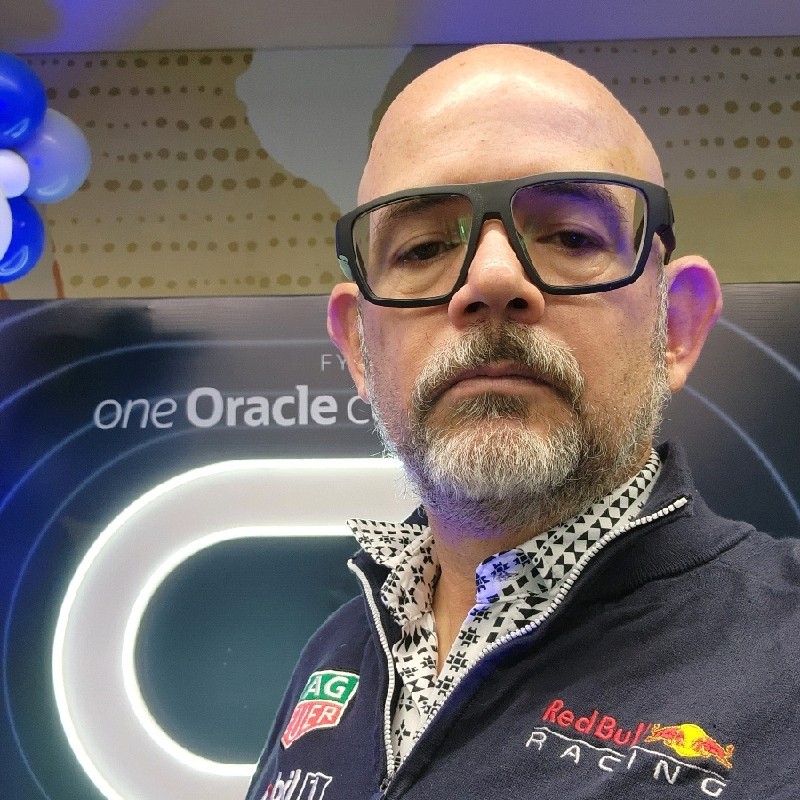
Marcos Palma
Oracle
Pedro Alves Batista
The Home Depot
Milton Campomanes
Oracle
